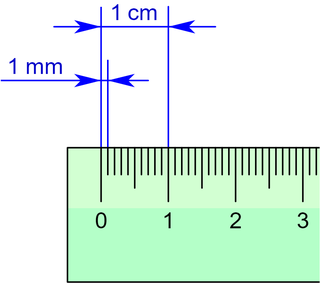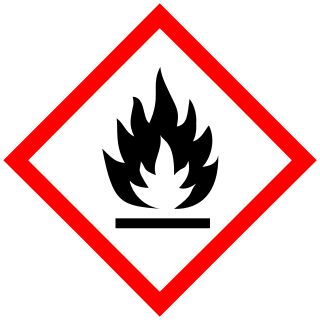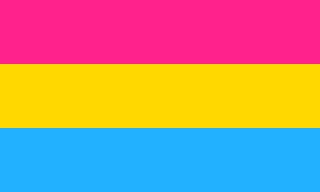In telecommunication, intersymbol interference (ISI) is a form of distortion of a signal in which one symbol interferes with subsequent symbols. This is an unwanted phenomenon as the previous symbols have a similar effect as noise, thus making the communication less reliable. The spreading of the pulse beyond its allotted time interval causes it to interfere with neighboring pulses. ISI is usually caused by multipath propagation or the inherent linear or non-linear frequency response of a communication channel causing successive symbols to blur together.

The swastika is an ancient religious and cultural symbol, predominantly in various Eurasian, as well as some African and American cultures, now also widely recognized for its appropriation by the Nazi Party and by neo-Nazis. It continues to be used as a symbol of divinity and spirituality in Indian religions, including Hinduism, Buddhism, and Jainism. It generally takes the form of a cross, the arms of which are of equal length and perpendicular to the adjacent arms, each bent midway at a right angle.
The symbol # is known variously in English-speaking regions as the number sign, hash, or pound sign. The symbol has historically been used for a wide range of purposes including the designation of an ordinal number and as a ligatured abbreviation for pounds avoirdupois – having been derived from the now-rare ℔.

Chemical symbols are the abbreviations used in chemistry for chemical elements, functional groups and chemical compounds. Element symbols for chemical elements normally consist of one or two letters from the Latin alphabet and are written with the first letter capitalised.

The millimetre or millimeter is a unit of length in the International System of Units (SI), equal to one thousandth of a metre, which is the SI base unit of length. Therefore, there are one thousand millimetres in a metre. There are ten millimetres in a centimetre.

A biological hazard, or biohazard, is a biological substance that poses a threat to the health of living organisms, primarily humans. This could include a sample of a microorganism, virus or toxin that can adversely affect human health. A biohazard could also be a substance harmful to other living beings.

The caduceus is the staff carried by Hermes in Greek mythology and consequently by Hermes Trismegistus in Greco-Egyptian mythology. The same staff was also borne by heralds in general, for example by Iris, the messenger of Hera. It is a short staff entwined by two serpents, sometimes surmounted by wings. In Roman iconography, it was often depicted being carried in the left hand of Mercury, the messenger of the gods.
The multiplication sign, also known as the times sign or the dimension sign, is the symbol ×, used in mathematics to denote the multiplication operation and its resulting product. While similar to a lowercase X, the form is properly a four-fold rotationally symmetric saltire.

The Shift key⇧ Shift is a modifier key on a keyboard, used to type capital letters and other alternate "upper" characters. There are typically two shift keys, on the left and right sides of the row below the home row. The Shift key's name originated from the typewriter, where one had to press and hold the button to shift up the case stamp to change to capital letters; the shift key was first used in the Remington No. 2 Type-Writer of 1878; the No. 1 model was capital-only. On the US layout and similar keyboard layouts, characters that typically require the use of the shift key include the parentheses, the question mark, the exclamation point, and the colon.

The Alt keyAlt on a computer keyboard is used to change (alternate) the function of other pressed keys. Thus, the Alt key is a modifier key, used in a similar fashion to the Shift key. For example, simply pressing A will type the letter 'a', but holding down the Alt key while pressing A will cause the computer to perform an Alt+A function, which varies from program to program. The international standard ISO/IEC 9995-2 calls it Alternate key. The key is located on either side of the space bar, but in non-US PC keyboard layouts, rather than a second Alt key, there is an 'Alt Gr' key to the right of the space bar. Both placements are in accordance with ISO/IEC 9995-2. With some keyboard mappings, the right Alt key can be reconfigured to function as an AltGr key although not engraved as such.

In mathematics, the tombstone, halmos, end-of-proof, or Q.E.D. symbol "∎" is a symbol used to denote the end of a proof, in place of the traditional abbreviation "Q.E.D." for the Latin phrase "quod erat demonstrandum". It is inspired by the typographic practice of end marks, an element that marks the end of an article.

Aries (♈︎) is the first astrological sign in the zodiac, spanning the first 30 degrees of celestial longitude, and originates from the Aries constellation. Under the tropical zodiac, the Sun transits this sign from approximately March 21 to April 19 each year. This time-duration is exactly the first month of the Solar Hijri calendar.

The coat of arms of Haiti is the national coat of arms of the Republic of Haiti. It was originally introduced in 1807, and it has appeared in its current form since 1986. Since this Haitian national symbol does not conform to the rules of heraldry for a traditional coat of arms, then it could be considered a national emblem instead.
Puzzle League, known as Panel de Pon in Japan, is a series of video games published by Nintendo for its various video game consoles. The series began with Panel de Pon in Japan, named Tetris Attack in North America, and has since been adapted to many other consoles. The core gameplay of each version is the same in each game, but branding, presentation details and console-specific features have varied.

A hazard is a potential source of harm. Substances, events, or circumstances can constitute hazards when their nature would allow them, even just theoretically, to cause damage to health, life, property, or any other interest of value. The probability of that harm being realized in a specific incident, combined with the magnitude of potential harm, make up its risk, a term often used synonymously in colloquial speech.

The pansexual flag is a pink, yellow and cyan flag, designed as a symbol for the pansexual community to increase its visibility and recognition, and distinguish itself from bisexuality.
The voiceless uvular affricate is a type of consonantal sound, used in some spoken languages. The symbols in the International Phonetic Alphabet that represent this sound are ⟨q͡χ⟩ and ⟨q͜χ⟩, and the equivalent X-SAMPA symbol is q_X. The tie bar may be omitted, yielding ⟨qχ⟩ in the IPA and qX in X-SAMPA.

A sex symbol or icon is a person or character widely considered sexually attractive and often synonymous with sexuality.

Triple parentheses or triple brackets, also known as an ( ), are an antisemitic symbol that has been used to highlight the names of individuals assumed to be of a Jewish background, or organizations thought to be owned by Jews. The practice originated from the alt-right-affiliated, neo-Nazi blog The Right Stuff; the blog's editors have explained that the symbol is meant to symbolize that the historic actions of Jews caused their surnames to "echo throughout history". The triple parentheses have been adopted as an online stigma by antisemites, neo-Nazis, browsers of the "Politically Incorrect" board on 4chan, and white nationalists to identify individuals of Jewish background as targets for online harassment, such as Jewish political journalists critical of Donald Trump during his 2016 election campaign.













